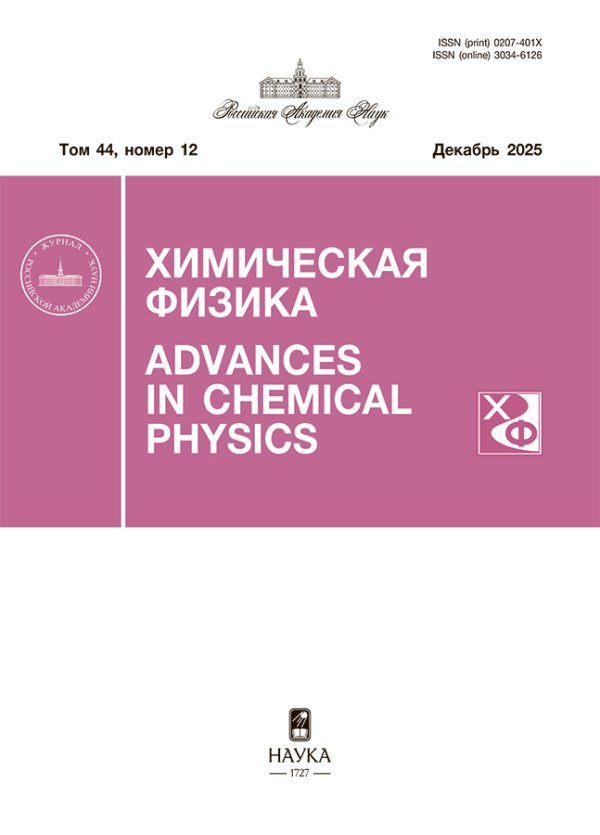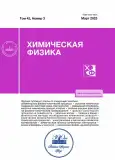Effect of Obstructed Space on the Parameters of Shock Waves from the Deflagration of Hydrogen–Air Clouds
- Authors: Sumskoi S.I.1, Sof’in A.S.2, Zainetdinov S.K.2, Lisanov M.V.2, Agapov A.A.2
-
Affiliations:
- National Research Nuclear University MEPhI (Moscow Engineering Physics Institute), Moscow, Russia
- ZAO Scientific and Technical Center of Industrial Safety, Moscow, Russia
- Issue: Vol 42, No 3 (2023)
- Pages: 63-69
- Section: Combustion, explosion and shock waves
- URL: https://journals.rcsi.science/0207-401X/article/view/139918
- DOI: https://doi.org/10.31857/S0207401X23030159
- EDN: https://elibrary.ru/NCVPEY
- ID: 139918
Cite item
Full Text
Abstract
This article considers the generation of pressure waves during the combustion of hydrogen–air clouds in various modes. The problem of the combustion of spherical clouds, in which the inner spherical volume burns with an apparent velocity of 240 m/s, and the remaining outer layer with an apparent velocity of 100 m/s, is considered. Also, for comparison, two limiting cases are considered: the combustion of the entire cloud with constant velocities of 100 and 240 m/s. The problem is solved numerically in a one-dimensional formulation, with the combustion front clearly identified. As a result, using precise numerical simulation, it is shown that the deflagration of secondary volumes of hydrogen–air mixtures in an open space at a slow speed (up to 100 m/s) does not lead to an increase in pressure in the waves generated earlier during the deflagration of the primary volume at a fast speed corresponding to deflagration in an obstructed space. Such a situation is observed for the inner region of various sizes (the portion of the cloud that burns at a high rate).
About the authors
S. I. Sumskoi
National Research Nuclear University MEPhI (Moscow Engineering Physics Institute), Moscow, Russia
Email: sumskoi@mail.ru
Россия, Москва
A. S. Sof’in
ZAO Scientific and Technical Center of Industrial Safety, Moscow, Russia
Email: sumskoi@mail.ru
России, Москва
S. Kh. Zainetdinov
ZAO Scientific and Technical Center of Industrial Safety, Moscow, Russia
Email: sumskoi@mail.ru
России, Москва
M. V. Lisanov
ZAO Scientific and Technical Center of Industrial Safety, Moscow, Russia
Email: sumskoi@mail.ru
России, Москва
A. A. Agapov
ZAO Scientific and Technical Center of Industrial Safety, Moscow, Russia
Author for correspondence.
Email: sumskoi@mail.ru
России, Москва
References
- van den Berg A.C. // J. Hazard. Mater. 1985. V. 12. № 1. P. 1.
- Brasie W.C., Simpson D.W. // Loss Prevention. 1968. V. 2. P. 91.
- Садовский М.А. Физика взрыва. Сб. № 1 научно-исследовательских работ в области физики взрыва. М.: Изд-во АН СССР, 1952.
- Борисов А.А., Гельфанд Б.Е., Цыганов С.А. // Физика горения и взрыва. 1985. Т. 21. № 2. С. 90.
- Pasman H.J., Wagner H.G. // Proc. 5th Intern. Sympos. on Loss Prevention and Safety Promotion in the Process Industries. V. 3. Paris: Societe de Chimie Industrielle, 1986. P. 176.
- Борисов А.А., Гельфанд Б.Е., Цыганов С.А. // Физика горения и взрыва. 1989. Т. 25. № 1. С. 90.
- Taylor G.I. // Proc. R. Soc. London, Ser. A. 1946. V. 186. P. 273.
- Strehlow R.A., Luckritz R.T., Adamczyk A.A., Shimpi S.A. // Combust. and Flame. 1979. V. 35. P. 297.
- Kuhl A.L., Kamel M.M., Oppenheim A.K. // Combustion. 1973. V. 14. P. 1201.
- Williams F.A. // J. Fluid Mech. 1976. V. 127. P. 429.
- Wiekema B.J. // J. Hazard. Mater. 1980. V. 3. № 3. P. 221.
- Methods for the calculations of physical effects (“Yellow Book”). CPR 14E / Eds. van den Bosch C.J.H., Weterings R.A.P.M. The Hague: Committee for the Prevention of Disasters, 2005.
- Агапов А.А., Сафонов В.С., Сумской С.И., Швыряев А.А. // Безопасность труда в пром-сти. 2020. № 5. С. 36.
- Руководство по безопасности “Методика оценки последствий аварийных взрывов топливно-воздушных смесей”. Серия 27. Выпуск 15. М.: Закрытое акционерное общество “Научно-технический центр проблем промышленной безопасности”, 2019.
- Harris R.J., Wickens M.J. Understanding vapour cloud explosions – an experimental study. Comm. 1408. London: Institution of Gas Engineers, 1989.
- Harrison A.J., Eyre J.A. // Combust. Sci. Technol. 1987. V. 52. P. 121.
- van Wingerden C.J.M. // Proc. 6th Intern. Sympos. on Loss Prevention and Safety Promotion in the Process Industries. Oslo, Norway: European Federation of Chemical Engineering. Norwegian Society of Chartered Engineers, 1989. P. 26-1.
- Zeeuwen J.P., van Wingerden C.J.M., Dauwe R.W. // Proc. 4th Intern. Sympos. on Loss Prevention and Safety Promotion in the Process Industries. Chem. Eng. Symp. Series № 80. Creat Britain: Institution of Chemical Engineers, 1983. P. D-20.
- Pfortner H., Schneider H. ICT Projektforscung 1983. Forschungsprogramm “Prozeβgasfreisetzung – Explosion in der Gasfabrik und Auswirkungen von Druckwellen auf das Containment”. Ballonvesuche zur Untersuchung der Deflagration von Wasserstoff/ Luft-Gemischen (Abschluβbericht). Fraunhofer-institut fur treib-und explosivstoffe, 1983.
- Губин С.А., Шаргатов В.А. // Физика горения и взрыва. 1989. Т. 25. № 5. С. 111.
- Борисов А.А., Гельфанд Б.Е., Губин С.А., Одинцов В.В., Шаргатов В.А. // Хим. физика. 1986. Т. 3. № 5. С. 435.
- Губин С.А., Шаргатов В.А. // Хим. физика. 1989. Т. 8. № 2. С. 286.
- Sumskoi S.I., Sofyin A.S., Agapov A.A., Zainetdinov S.Kh. // J. Phys.: Conf. Ser. 2020. V. 1686. 012085.
- Яковенко И.С., Медведков И.С., Киверин А.Д. // Хим. физика. 2022. Т. 41. № 3. С. 85.
- Викторов С.Б., Губин С.А., Маклашова И.В., Пепекин В.И. // Хим. физика. 2005. Т. 24. № 12. С. 22.
- Mader Ch.L. Numerical modeling of detonation. Los Angeles: University of California Press, 1979.
- Бартльме Ф. Газодинамика горения. М.: Энергоиздат, 1981.
- Сумской С.И., Софьин А.С., Зайнетдинов С.Х., Агапов А.А. // Хим. физика. 2020. Т. 39. № 8. С. 28.
- Михалкин В.Н., Сумской С.И., Тереза А.М. и др. // Хим. физика. 2022. Т. 41. № 8. С. 1.












